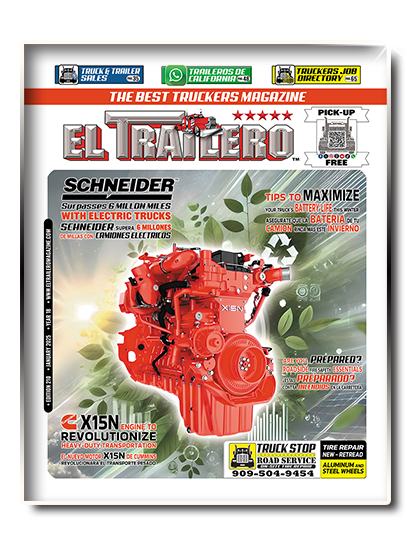 |
|
 |
Get our FREE |


In professional driving, seeing and being seen isn´t just essential—it´s the law. That´s why maintaining the electrical and lighting system of your Class 8 truck should always be a top priority. According to Federal Motor Carrier Safety Administration (FMCSA) regulations, all commercial vehicles must have fully functional headlights, turn signals, brake lights, reverse lights, and side marker lights. Failing an inspection due to a single burned-out bulb can result in fines, CSA point deductions, or even a roadside out-of-service order.
Here are some practical tips to help you keep your electrical system in top shape and avoid unexpected issues on the road:
Mechanical Tips for Checking Your Electrical System
1. Inspect Wiring and Connections Regularly
Visually examine all electrical cables running between the tractor and trailer. Look for signs of wear, cracks, shorts, or loose connections. Make sure wire harnesses are secured properly and not rubbing against sharp chassis edges.
2. Clean and Protect Connectors
The 7-pin connectors between the truck and trailer often accumulate moisture, dirt, and rust. Use dielectric spray to clean them, and apply dielectric grease to prevent corrosion. Poor contact in these connectors is a common cause of rear lighting failures.
3. Check Battery Condition
Ensure your battery holds proper voltage—12.6V at rest and over 13.7V when the engine is running. Keep terminals clean and corrosion-free. A weak battery can cause ignition problems and lead to flickering lights when auxiliary systems are in use.
4. Inspect All Fuses
Check the fuse box monthly. A blown fuse can disable key lighting functions without your immediate awareness. Always carry spare fuses in the cab, especially on long hauls.
5. Perform Nighttime Lighting Tests
Before night shifts or long-distance trips, turn on all exterior lights and walk around the truck. Confirm every light is working and that the lenses are clear and free of cracks or fogging.
6. Replace Bulbs in Pairs
When one bulb burns out, the other is usually close behind. Replacing both at once saves time and lowers the chance of lighting issues while you\'re on the road.
Remember:
Lighting isn’t just about visibility or appearance—it’s a key component of road safety and FMCSA compliance. Preventive maintenance helps avoid accidents, failed inspections, and penalties. Making electrical checks part of your regular pre-trip routine can mean the difference between a smooth ride and a roadside delay.
Since June, the FMCSA has required medical examiners to electronically submit commercial drivers’ physical exam re...
read more...In August, the U.S. trucking industry faced an unexpected setback: Secretary of State Marco Rubio announced the temporar...
read more...For truckers and small transportation business owners, choosing the right legal structure is not just paperwork—it...
read more...After the intensive Brake Safety Week in August, California’s compliance and highway safety calendar for the truck...
read more...

